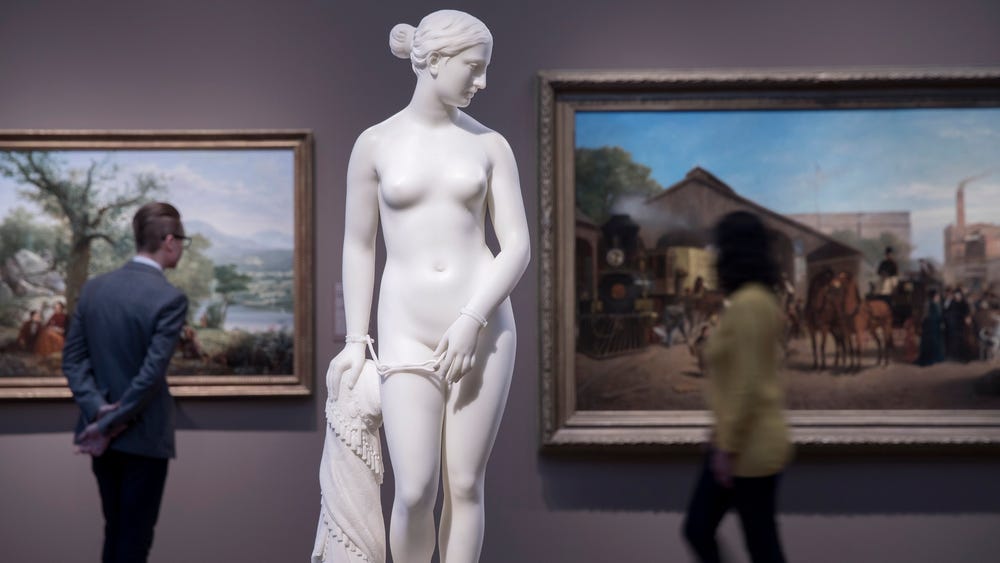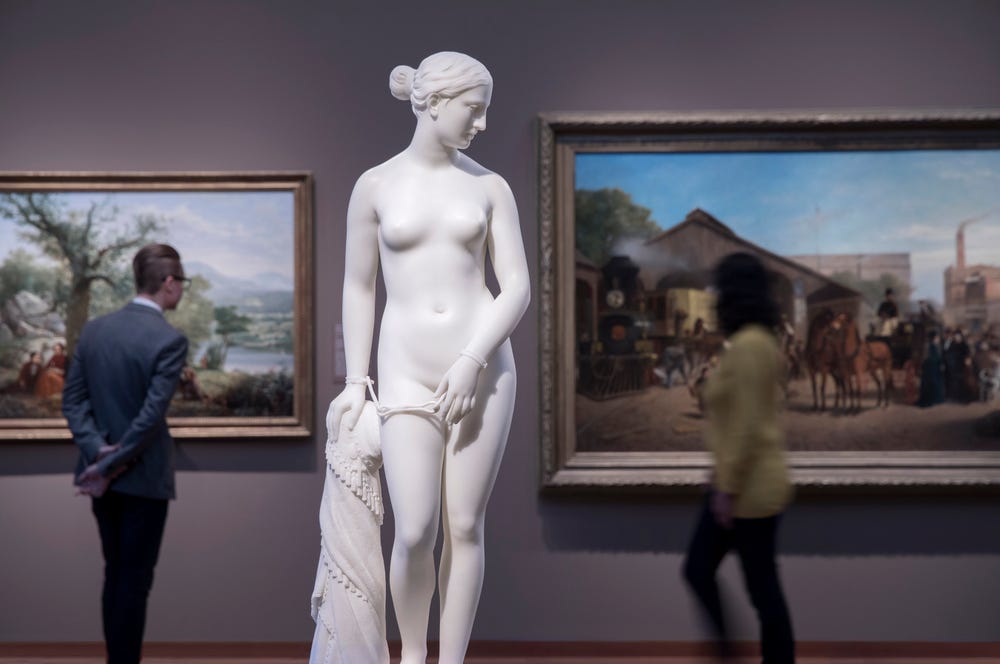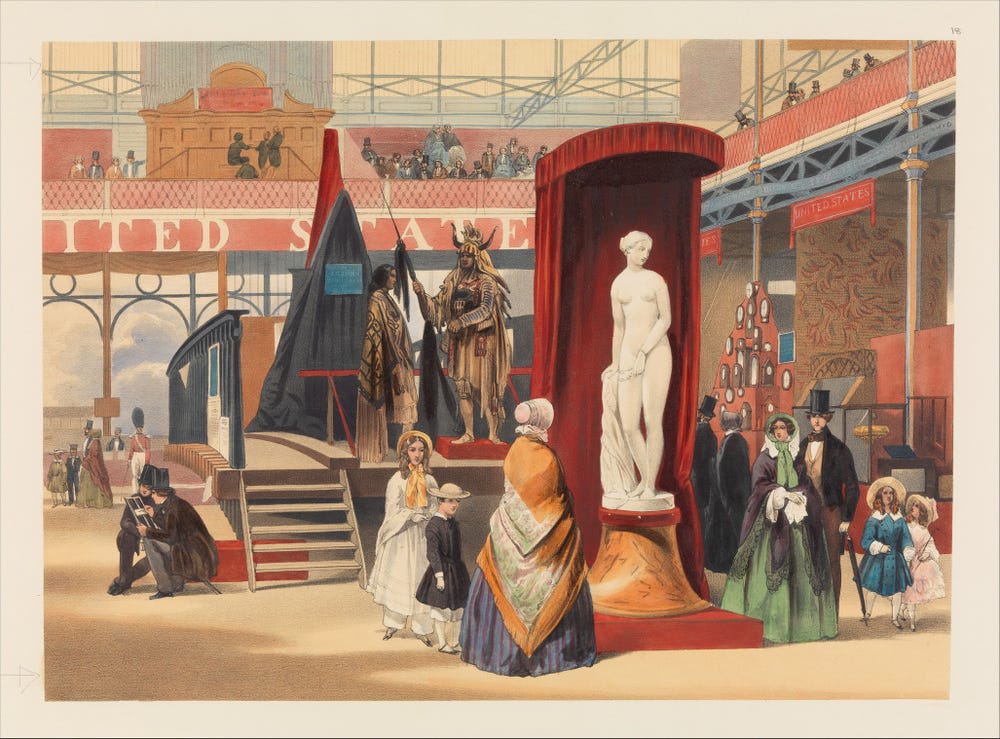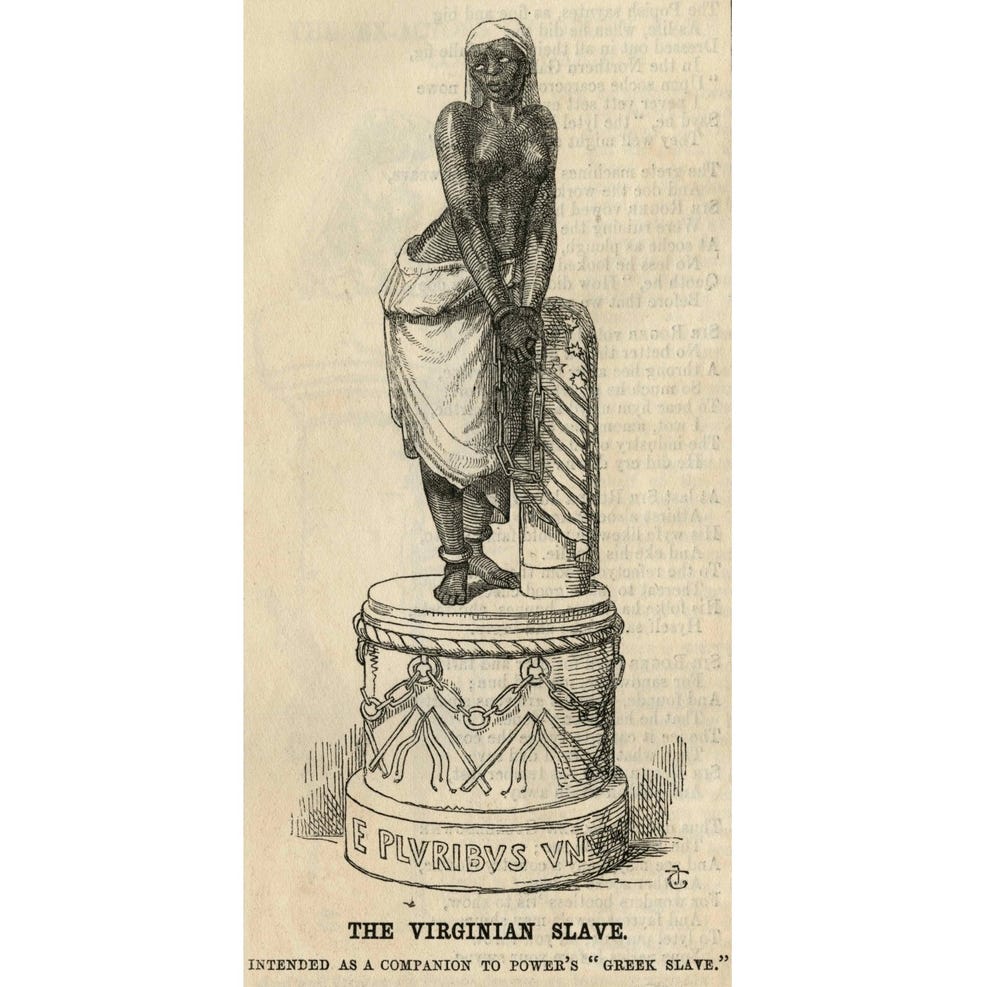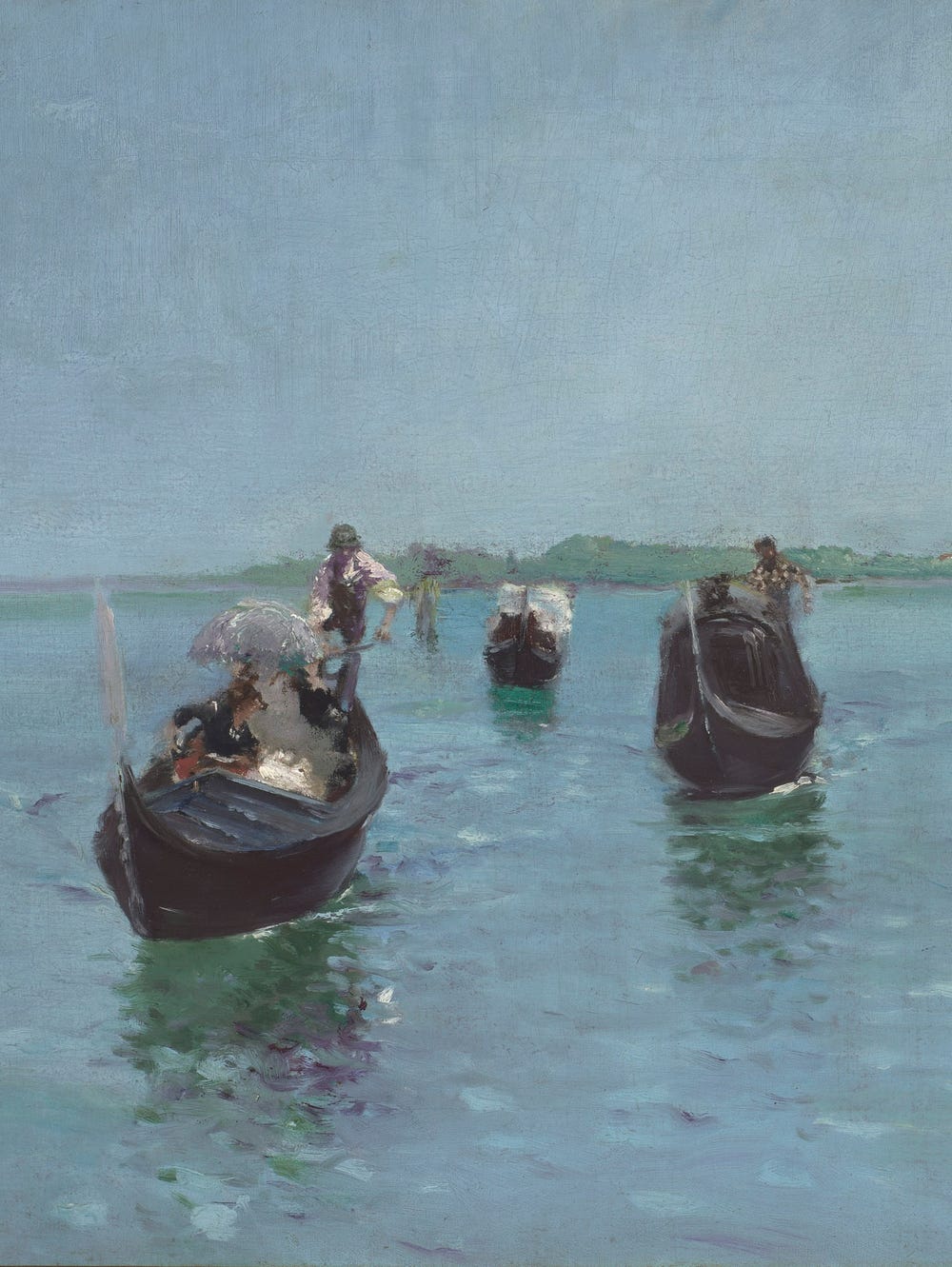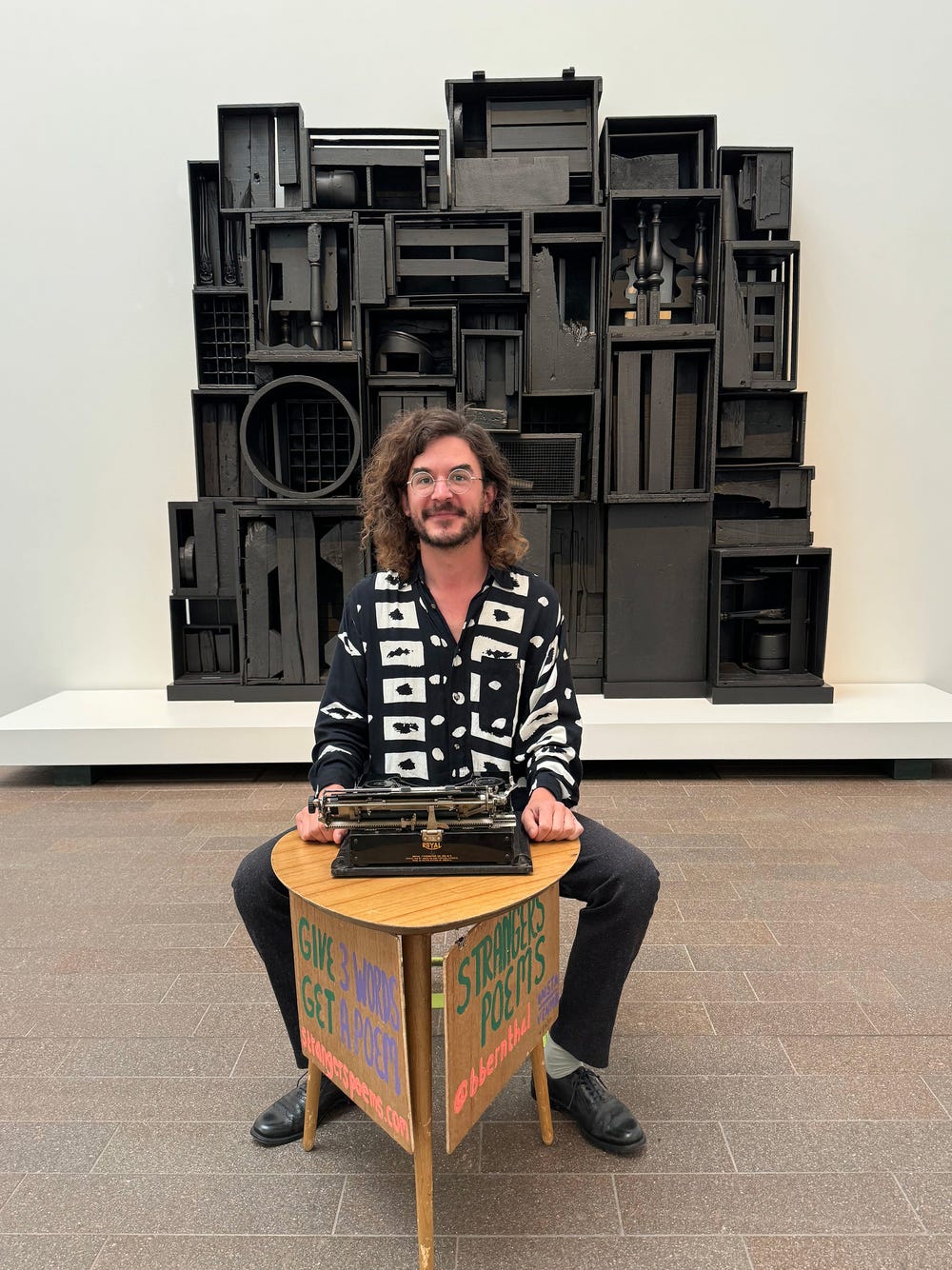An Abolitionist Symbol: Hiram Powers’s “Greek Slave”
By Timothy Anglin Burgard
October 1, 2020
Hiram Powers, Greek Slave, ca. 1873. Marble, 45 ½ x 15 x 12 in. (115.6 x 38.1 x 30.5 cm). Fine Arts Museums of San Francisco, Museum purchase, gift of Mr. and Mrs. John D. Rockefeller 3rd, by exchange, and the Roscoe and Margaret Oakes Income Fund, 2016.1
Hiram Powers’s (American, 1805 – 1873) full-length nude Greek Slave was the most famous sculpture of the 19th century. The subject is a chained Greek woman who has been taken captive by Turkish Ottoman forces during the War of Greek Independence (1821 – 1832) and publicly displayed for sale in a Constantinople (now Istanbul) slave market. A prominent Christian cross by her right hand symbolizes her faith, while a locket poignantly represents severed family ties.
— Unidentified AuthorAs this eloquent statue traverses the land, may many a mother and daughter of the Republic be awakened to a sense of the enormity of slavery, as it exists in our midst! Thus may Art, indeed, fulfill its high and holy mission! Let the solemn lesson sink deep into the hearts of the fair women of the North and of the South! Waste not your sympathies on the senseless marble, but reserve some tears for the helpless humanity which lies quivering beneath the lash of American freemen.
Hiram Powers, Greek Slave, ca. 1873. Marble, 45 ½ x 15 x 12 in. (115.6 x 38.1 x 30.5 cm). Fine Arts Museums of San Francisco, Museum purchase, gift of Mr. and Mrs. John D. Rockefeller 3rd, by exchange, and the Roscoe and Margaret Oakes Income Fund, 2016.1
Greek Slave, one of the earliest fine art nudes exhibited publicly in the United States, generated popular and critical acclaim, as well as enormous controversy. Although the famous Presbyterian minister Lyman Beecher declared the statue to be indecent, most viewers embraced her cover story — that she embodied Christian faith and courage in the face of great adversity.
The Greek struggle to establish a modern democracy garnered strong support in the United States. However, critics also connected Powers’s enslaved white subject to the contemporary enslavement of African Americans, and the statue was adopted as a potent propaganda symbol by abolitionists such as Frederick Douglass, who kept a small replica in the parlor of his Washington, DC, home.
John Absolon, View in the East Nave The Greek Slave, by Power [sic]; from Recollections of the Great Exhibition, 1851. Publisher: Lloyd Brothers & Co. (London). Hand-colored lithograph with gum, 10 11/16 × 14 11/16 in. (27.2 × 37.3 cm). Metropolitan Museum of Art, Purchase, Anne Stern Gift, 1976.664(19)
When Greek Slave was exhibited as the centerpiece of the American Pavilion at the 1851 Great Exhibition in London’s Crystal Palace, the African American writer and abolitionist William Wells Brown, who had escaped slavery in the American South, provocatively placed an engraving depicting an enslaved Virginia woman (below) at the feet of the statue, explicitly linking the statue to slavery in the United States.
John Tenniel, The Virginian Slave, Intended as a Companion to Power’s ‘Greek Slave’, in “Punch” 20 (1851): 236. University of Virginia Library
We are now open and thrilled to welcome you back safely to the de Young museum! You can see Hiram Powers’s Greek Slave on view in Gallery 23. With your health and safety as our top priority, we’ve made some changes to create additional time and space for everyone.
Read Our Safety Plan
Text by Timothy Anglin Burgard, distinguished senior curator and Ednah Root Curator in Charge of American Art. This text is an excerpt from the upcoming selected works publication, de Young 125, available for presale in Spanish, Mandarin, and English from the Museum Stores.
Learn more about American art at the de Young.
